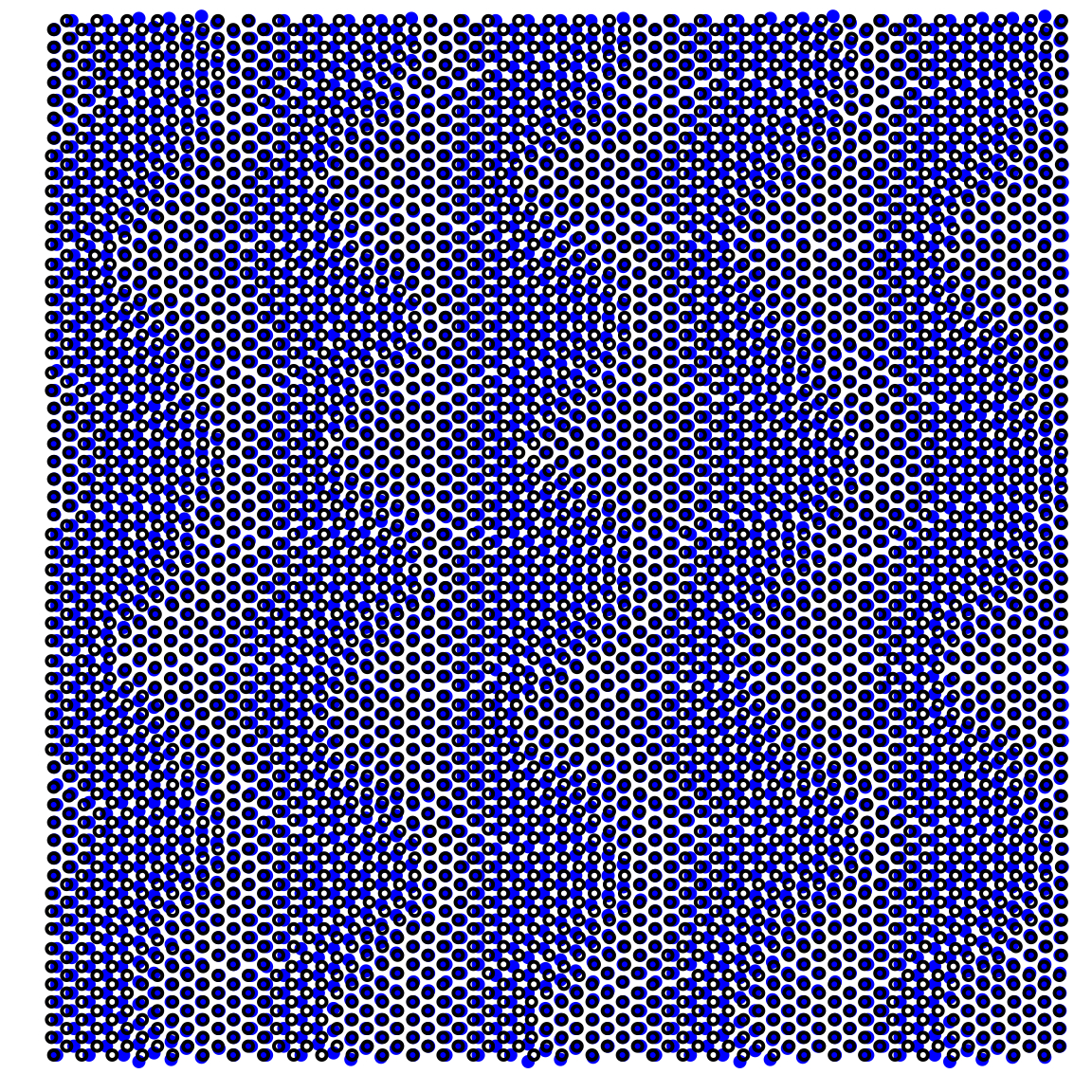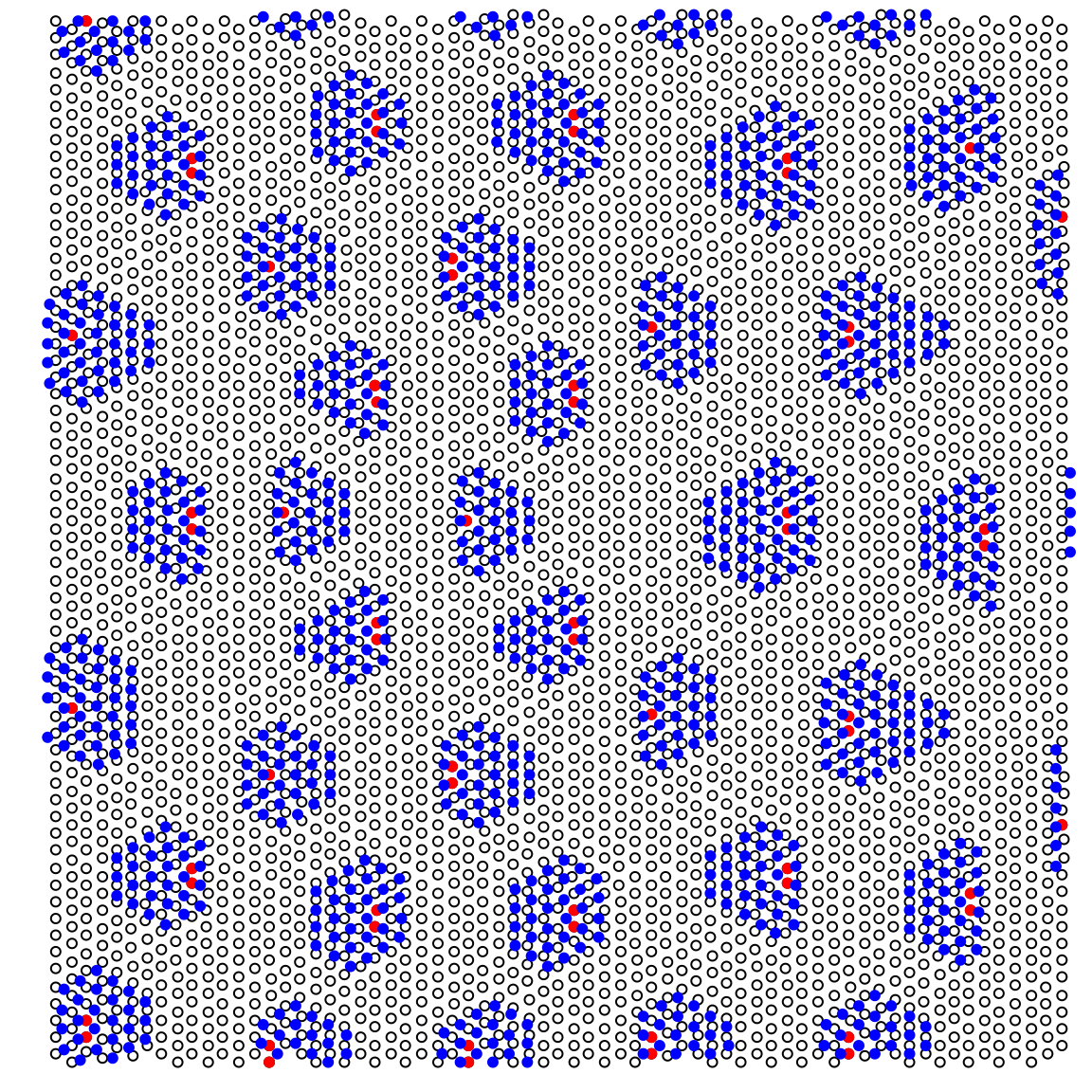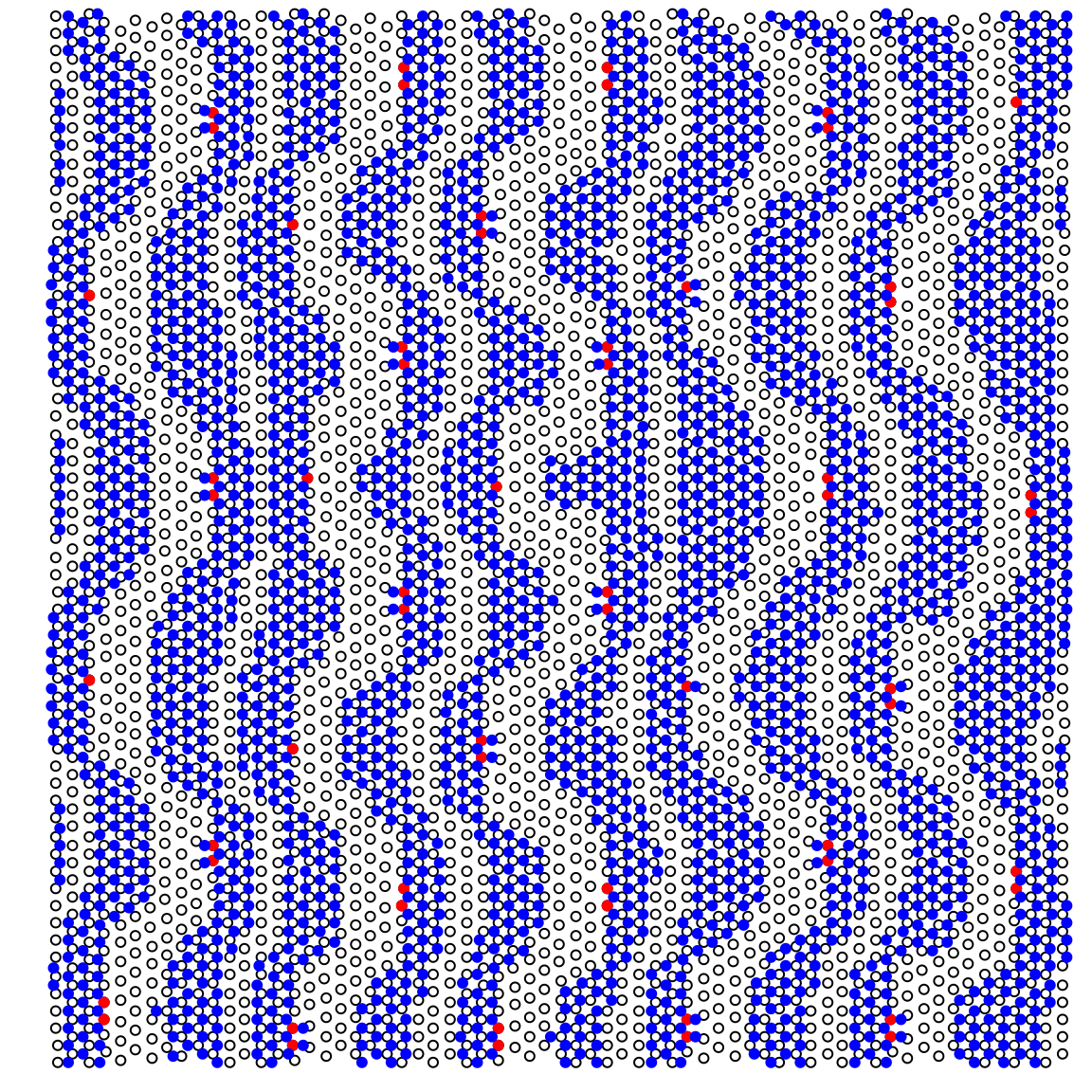Phase-field crystal models
One problem of long-standing interest to our group has to do with extending the time scales of atomic scale simulations. To this end, several years ago, we introduced a continuum “phase-field crystal model” capable of simulating crystalline phases with atomic scale spatial resolution across diffusive time scales [for details, see K. R. Elder et al., PRL 88, 245701 (2002)]. Together with Peter Stefanovic and Nick Provatas, we have extended this method to include elastic relaxation through the propagation of “quasi-phonons” [Stefanovic et al., PRL 95, 225504 (2006)]. More recently, we have studied the formation of strain-induced compositional domains on metallic surfaces [Muralidharan and Haataja, Phys. Rev. Lett. (2010)]. The figures below illustrate the behavior of CoAg film on Ru(0001) surface. Left panel: symmetric composition. Middle panel: Ag-rich composition. Note the coexistence between a nanoscale alloy and a dislocated pure Ag phase. Right panel: Co-rich composition. Note the coexistence between a pseudomorphic alloy phase and Co-rich phase.
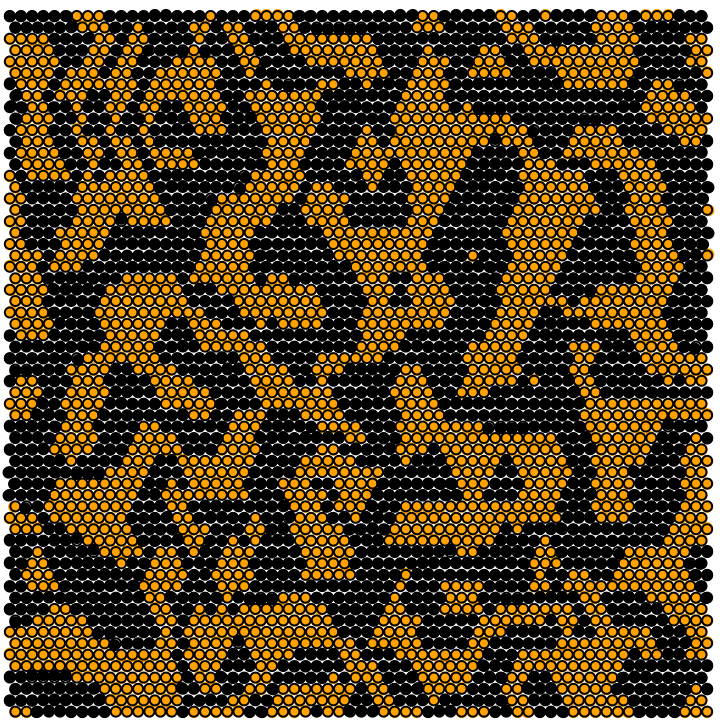
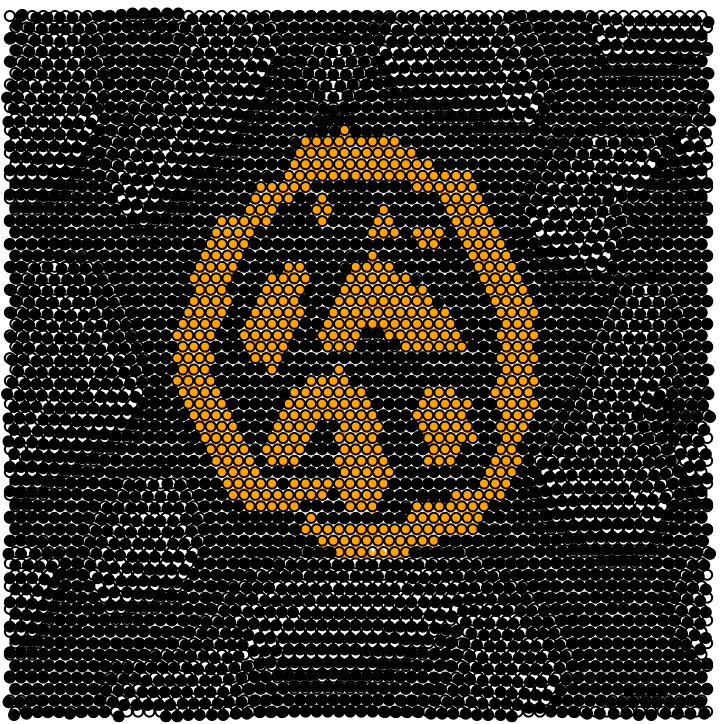
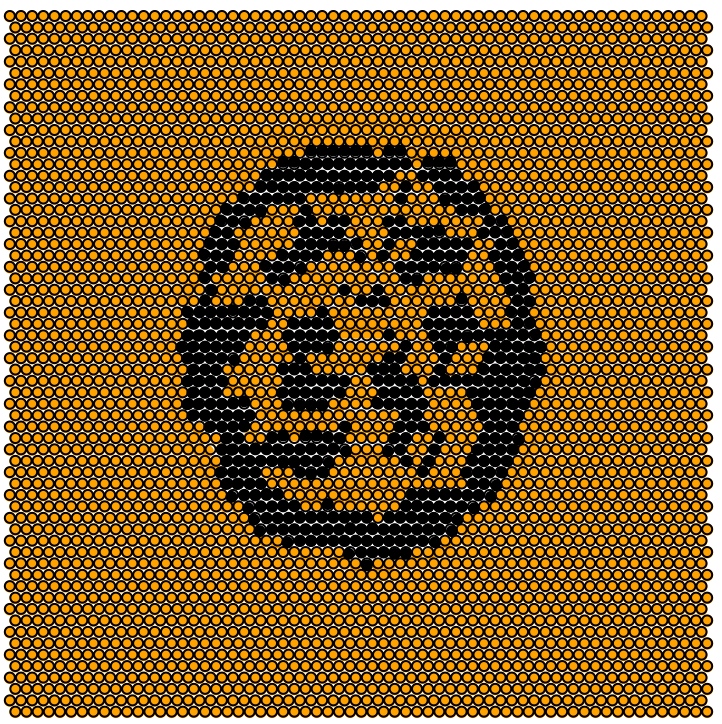
Additionally, we have investigated the growth of multilayer thin film systems using the PFC approach. Left panel: so-called herringbone pattern emerges from the deposition of 1 ML of Ag on Ru(0001) substrate. Middle panel: Nucleation of islands on top of misfit dislocations (shown in red circles) within ML1. Here, ML2 atoms (shown in blue) have a misfit relative to both Ag and Ru. [In other words, we have a A/B/C-type multilayer system.] Right panel: A/B/A-type growth. Here, Ru atoms comprising ML2 form elongated islands as directed by the herringbone patterns in ML1.
